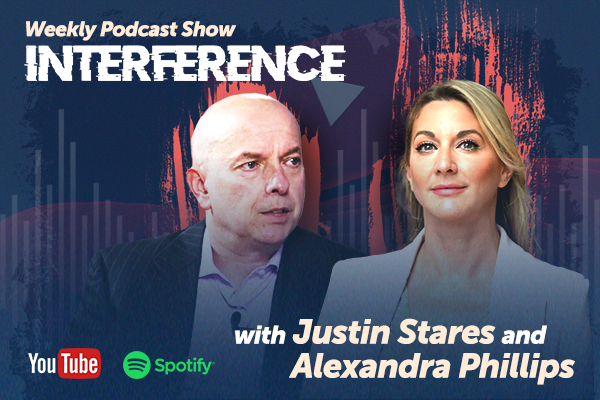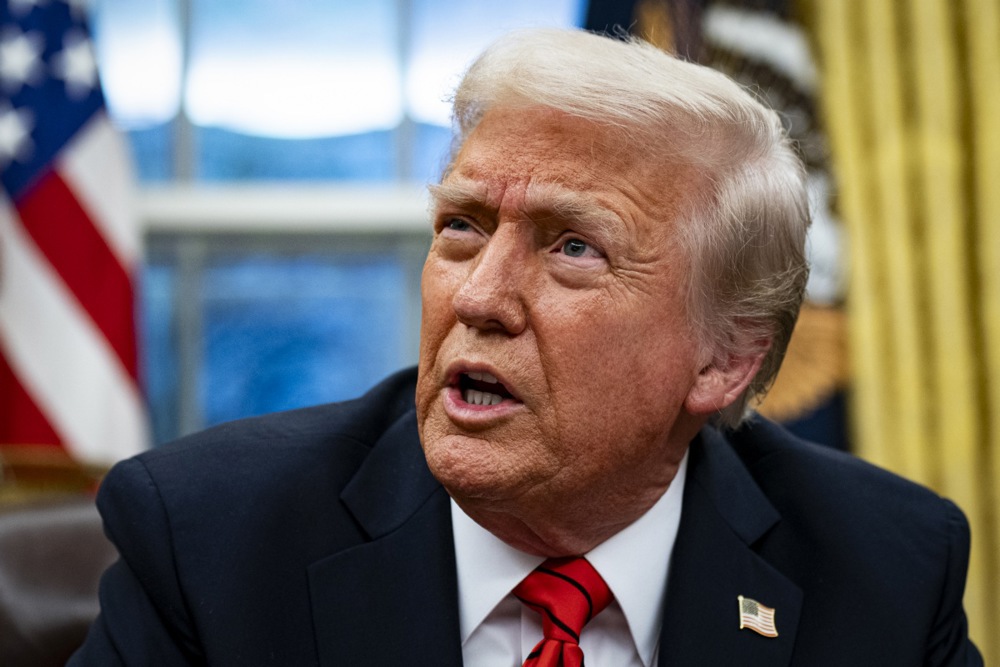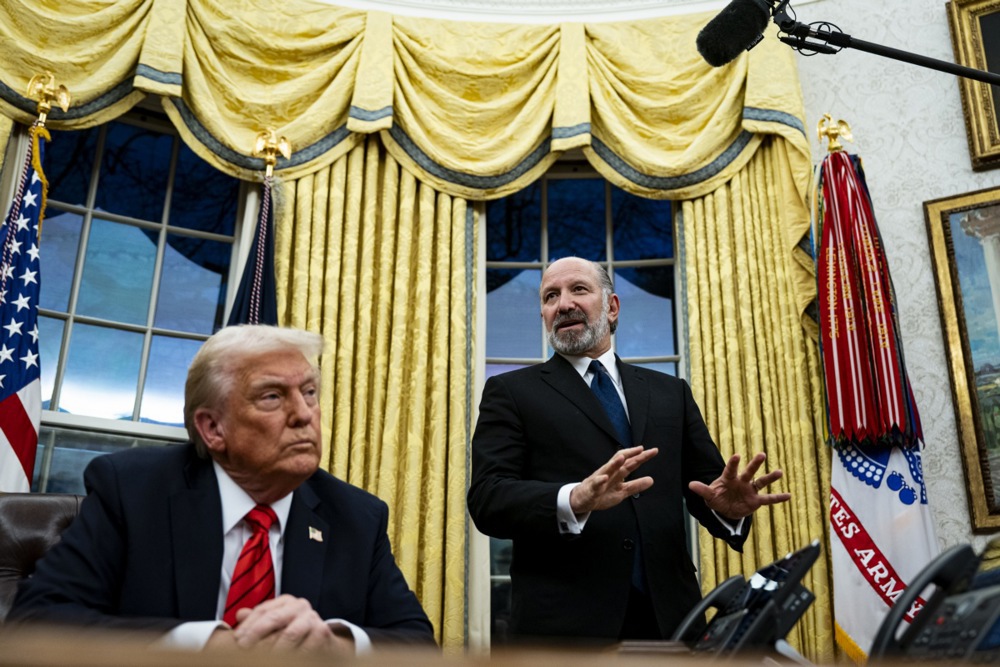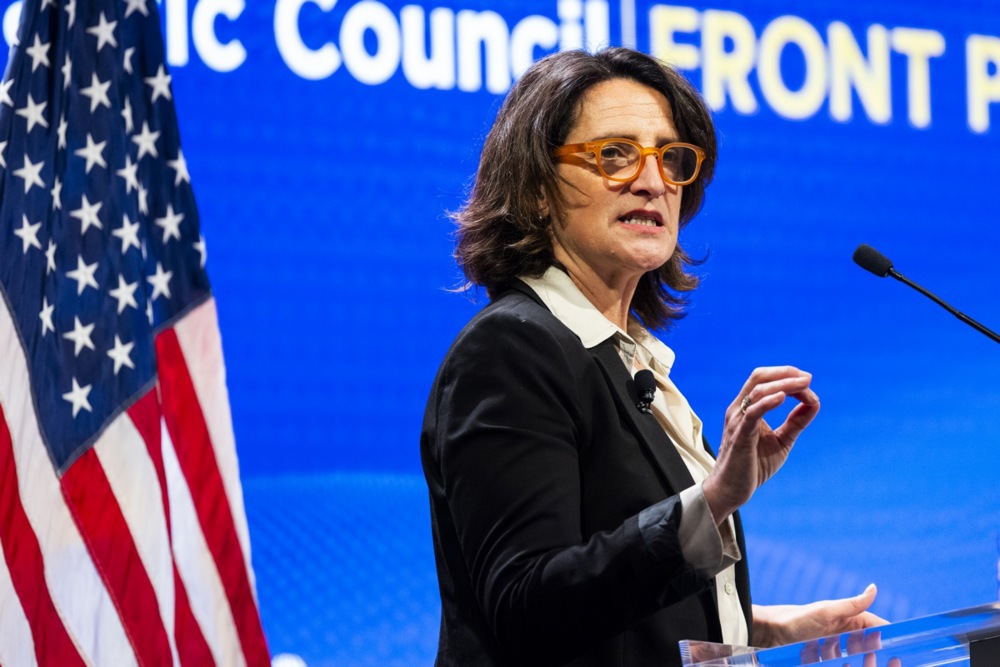US President Donald Trump’s stunning decision to pause most of the hefty duties he had just imposed on dozens of countries brought relief for battered global stock markets on April 10, even as he ratcheted up a trade war with China.
Trump’s turnabout on April 9, which came less than 24 hours after steep new tariffs kicked in on most trading partners, followed the most intense episode of financial market volatility since the early days of the COVID-19 pandemic.
The upheaval erased trillions of dollars from stock markets and led to an unsettling surge in US government bond yields that appeared to catch Trump’s attention.
“I thought that people were jumping a little bit out of line, they were getting yippy, you know,” Trump told reporters after the announcement, referring to the jitters sportspeople sometimes get.
US stock indexes shot higher on the news, with the benchmark S&P 500 .SPX index closing 9.5 per cent higher, and the relief continued into Asian trading on April 10 with Japan’s Nikkei index .N225 surging 9 per cent.
European futures also pointed to big gains, but there were already signs the rally may be short-lived with US stock futures trading lower. Oil prices also fell, extending losses fuelled by fears that the trade tensions could push the global economy towards recession.
Since returning to the White House in January, Trump has repeatedly threatened an array of punitive measures on trading partners, only to revoke some of them at the last minute. The on-again, off-again approach has baffled world leaders and spooked business executives.
US Treasury Secretary Scott Bessent asserted that the 90-day freeze on Trump’s “reciprocal tariffs” had been the plan all along to bring countries to the table. Trump, though, later indicated that the near-panic in markets that had unfolded since his April 2 announcements had factored in to his thinking.
Despite insisting for days that his policies would never change, he told reporters on April 9: “You have to be flexible.”
But he kept the pressure on China, the world’s No. 2 economy and second biggest provider of US imports. Trump immediately hiked the tariff on Chinese imports to 125 per cent from the 104 per ent level that kicked in on April 9.
Beijing may again respond in kind after slapping 84 per cent tariffs on US imports on April 9 to match Trump’s earlier tariff salvo. It has repeatedly vowed to “fight to the end” in the escalating trade war between the world’s top two economies.
“We don’t back down,” China’s foreign ministry spokesperson Mao Ning posted on X on April 10, sharing a video of a defiant speech by late Chinese leader Mao Zedong from 1953 during its war with the United States on the Korean peninsula.
The Korean War ended in a stalemate later that year.
Trump said a resolution with China on trade is also possible. But officials have said they will prioritize talks with other countries as Vietnam, Japan, South Korea and others line up to try and strike a bargain.
“China wants to make a deal,” Trump said. “They just don’t know how quite to go about it.”
Beijing said it had held talks with the European Union and Malaysia on strengthening trade in response to the tensions, although Australia said it had rebuffed an offer from China, its top trading partner, to work together to counter the tariffs.
“We are not going to be holding hands with China in respect of any contest that is going on in the world,” Deputy Prime Minister Richard Marles told Sky News.
Hopes of state support helped prop up Chinese stocks on April 10, even as its yuan currency fell to its weakest level since the global financial crisis.
Chinese sellers on Amazon AMZN.O are preparing to hike prices for the US or quit that market due to the tariff blow.
Goldman Sachs revised down its forecasts for China’s GDP growth to 4 per cent in 2025, from previous projections of 4.5 per cent, citing the negative effects of tariffs.
Trump’s reversal on the tariffs imposed on other countries is also not absolute. A 10 per cent blanket duty on almost all US imports will remain in effect, the White House said. The announcement also does not appear to affect duties on autos, steel and aluminum that are already in place.
The pause also does not apply to duties paid by Canada and Mexico, because their goods are still subject to 25 per cent fentanyl-related tariffs if they do not comply with the US-Mexico-Canada trade agreement’s rules of origin. Those duties remain in place for the moment, with an indefinite exemption for USMCA-compliant goods.
Trump’s tariffs had sparked a days-long selloff that erased trillions of dollars from global stocks and pressured US Treasury bonds and the dollar, which form the backbone of the global financial system. Canada and Japan said they would step in to provide stability if needed – a task usually performed by the United States during times of economic crisis.
Treasury Secretary Bessent shrugged off questions about market turmoil and said the abrupt reversal rewarded countries that had heeded Trump’s advice to refrain from retaliation.
He suggested Trump had used the tariffs to create maximum negotiating leverage. “This was his strategy all along,” Bessent told reporters. “And you might even say that he goaded China into a bad position.”
Bessent is the point person in the country-by-country negotiations that could address foreign aid and military cooperation as well as economic matters. He declined to say how long negotiations with the more than 75 countries that have reached out might take.
“The measure announced by the US administration, pending the exact nuances of its implementation, seems to open the door to negotiation,” Spanish Prime Minister Pedro Sanchez said in speech on April 10.





